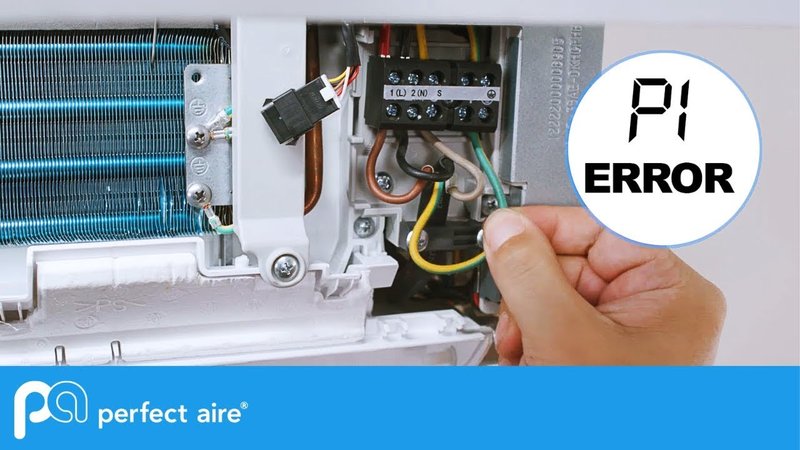
In simple terms, the “LE” error code on your Frigidaire air conditioner indicates a problem with the unit’s leakage detection. Think of it like a check engine light in your car—it’s a warning that something’s not quite right. Ignoring this alert is tempting, especially when the air conditioner seems to be working fine at first glance. However, neglecting to address this issue could lead to larger problems down the line.
Understanding the LE Error Code
The “LE” error code is essentially your air conditioner’s way of telling you that it’s detected some form of leakage, specifically refrigerant leakage. Refrigerant is the lifeblood of your air conditioner—it’s what allows the machine to produce that delightful cool air. When refrigerant leaks, it’s like trying to drive a car without enough fuel; eventually, it just won’t work.
So, why does this matter? Well, if you ignore the “LE” error, the refrigerant level in your air conditioner will continue to drop. This reduction not only compromises the unit’s efficiency—meaning it has to work harder to cool your space—but also can damage internal components over time. Much like running an engine without oil, running an AC with a refrigerant leak can lead to serious damage, possibly even requiring a costly replacement.
Moreover, refrigerant leaks aren’t just a technical inconvenience—they’re an environmental hazard. Refrigerants are potent greenhouse gases, and their release into the atmosphere contributes to environmental damage. By addressing the “LE” error promptly, you’re not just safeguarding your comfort and saving money; you’re also doing your part to protect the planet.
Potential Consequences of Ignoring the LE Error
You might be tempted to ignore the problem, hoping it will resolve itself. Unfortunately, that’s rarely the case with air conditioners. If you overlook the “LE” error, you could face a variety of negative consequences. The first and most obvious is the decreased efficiency of your AC unit. As refrigerant levels drop, your air conditioner will struggle to maintain the desired temperature. You’ll notice it takes longer to cool the room, and your electricity bills might start creeping up as your unit works overtime.
Another consequence is potential damage to critical components like the compressor. The compressor is like the heart of your air conditioner, and without adequate refrigerant, it could overheat and fail. Replacing a compressor is no small expense, and in some cases, it might be more cost-effective to replace the entire unit.
Lastly, there’s the risk of water damage. A leaking AC can result in moisture buildup, leading to mold and mildew development. This not only affects the air quality in your home but could also cause structural damage if left unchecked. Addressing the issue at its source is crucial to avoiding these costly and inconvenient problems.
What You Can Do About It
Alright, so ignoring the error isn’t a great idea. What should you do instead? First, consult your air conditioner’s manual or the manufacturer’s website for guidance specific to your model. Often, they’ll provide troubleshooting tips or recommend professional services. When it comes to refrigerant issues, it’s usually best to leave it to the experts. HVAC technicians can safely handle and recharge refrigerant, ensuring your unit functions correctly and efficiently.
In the meantime, while you await professional help, try to minimize the use of your air conditioner. Using it sparingly can help prevent further leakage and damage. Also, make sure to regularly check and replace filters, as clean filters can improve efficiency and air quality.
To prevent future errors, consider scheduling regular maintenance for your air conditioner. Much like routine car tune-ups, regular HVAC check-ups can catch small problems before they become big headaches. Not only does this help prolong the life of your unit, but it also ensures that you’re never caught off guard by an unexpected “LE” error again.
In conclusion, the “LE” error on your Frigidaire air conditioner isn’t just a minor inconvenience—it’s a call to action. By addressing it promptly, you’re taking steps to preserve your unit, save on energy costs, and protect the environment. Don’t let that blinking code intimidate you; with the right approach, you can resolve the issue and keep your home comfortably cool.